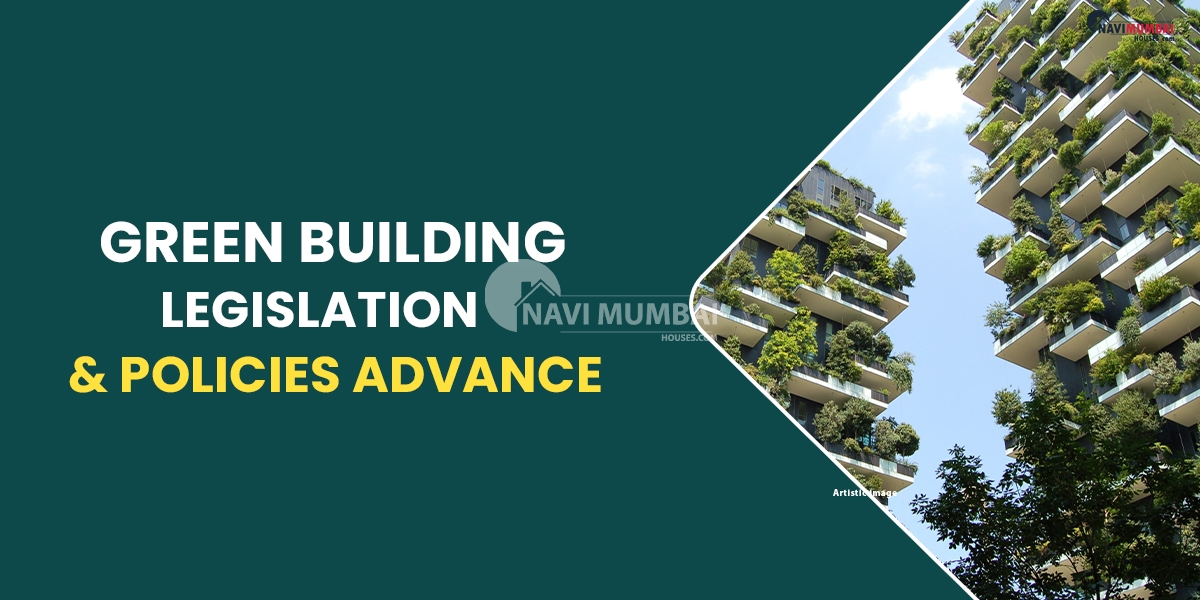
- June 23, 2023
- Finance & Legal, News
How Do Green Building Legislation & Policies Advance?
Green Building Legislation & Policies- India has received attention for the past ten years due to the expansion of its infrastructure. This suggests that the requirement for building construction is larger. From government buildings to apartment buildings, such as the Rajiv Gandhi International Airport in Hyderabad, Suzlon One Earth Campus in Pune, and Infosys Limited in Mysore, more and more green structures are being construct. For builders, architects, and consumers, the Leadership in Energy & Environmental Design (LEED) standard is a universally recognize standard. Guidelines for the design, construction, and operation of sustainable buildings have been established in India.
Are you searching for new projects in mulund?
But does India have any unique rules or ranking systems? Yes, it is the answer. The government has consistently taken action to ensure that green building regulations are upheld in order to limit environmental harm. Less water is use, energy efficiency is maximize, less waste is produce, and healthier places are provide by these constructions. The National Building Code, which considers building design & construction with a focus on energy conservation, is one of the more well-known rules. The Energy Conservation Building Code is also optional and applies to structures with sizable, climate-controlled floor spaces.
Efforts to conserve energy
(NBC) National Building Code
The National Building Code (NBC), created in the 1980s by The Bureau of Indian Standards, must be brought up in any discussion of green buildings. This code includes requirements for energy efficiency and addresses the majority of building design & construction issues. It was update in 2005 to include energy-saving features like HVAC design, daylight integration, and artificial lighting.
2001 Energy Conservation Act
The Energy Conservation Act of 2001, which resulted in the creation of the Bureau of Energy Efficiency (BEE), was another important regulation. The act essentially established standards for energy efficiency in major commercial buildings.
2006 Integrated Energy Policy
The Integrated Energy Policy, 2006, was create over a period of time. The identification of important sectors, such as building design, ventilation, air conditioning, lighting, and other spheres, was made possible by this rule. It also established a need for energy audits in all structures with loads greater than 1 MW.
Building energy efficiency regulations (ECBC)
India’s baseline energy usage was reduce with the implementation of the Energy Conservation Building Code (ECBC). The code establishes requirements to lower energy usage through design & construction practices while accounting for climatic zone difference.
(NMSH) National Mission on Sustainable Housing
The National Mission on Sustainable Habitat (NMSH) was create with the idea of achieving habitat sustainability through altering the structures’ energy efficiency. The Ministry of Urban Development is responsible for the regulation.
A number of states have designated organisations under the Energy Conservation Act that collaborate directly with the BEE, and this is significant to notice. They may be minor in scope, but they consistently work to limit climate change.
Incentives for eco-friendly construction
The Indian government offers incentives to contractors and groups that guarantee the development of green structures.
- Developers of LEED-certified structures can benefit from tax breaks by deducting up to 100% of the cost of their green building assets.
- The Indian Renewable Energy Development Agency (IREDA), which offers low-interest financing to those who construct green structures, is a good source.
- Several Indian governments have put in place special policies. Such tax exemptions and subsidies for businesses or builders, to promote green building certification.
- Compared to conventional buildings, green buildings benefit from faster inspections and fast-track approvals.
Conclusion- Green Building Legislation & Policies
The time is now to construct green buildings that are advantageous for the environment & high-value, low-risk assets, especially while climate change is knocking at our doors. additional incentives must be provided to lower capital expenditure, even though the government is already taking the necessary steps to promote the construction of additional buildings with green certifications.
There would be more developers eager to participate in this sustainable revolution if there were more financial incentives, such as tax breaks, grants, subsidies, and loans.
You’re looking for Projects in Chembur we have the Best Properties In Mumbai Like Ready to Move:https://navimumbaihouses.com/properties/search/chembur/
If you want daily property update details please follow us on Facebook Page / YouTube Channel / Twitter









